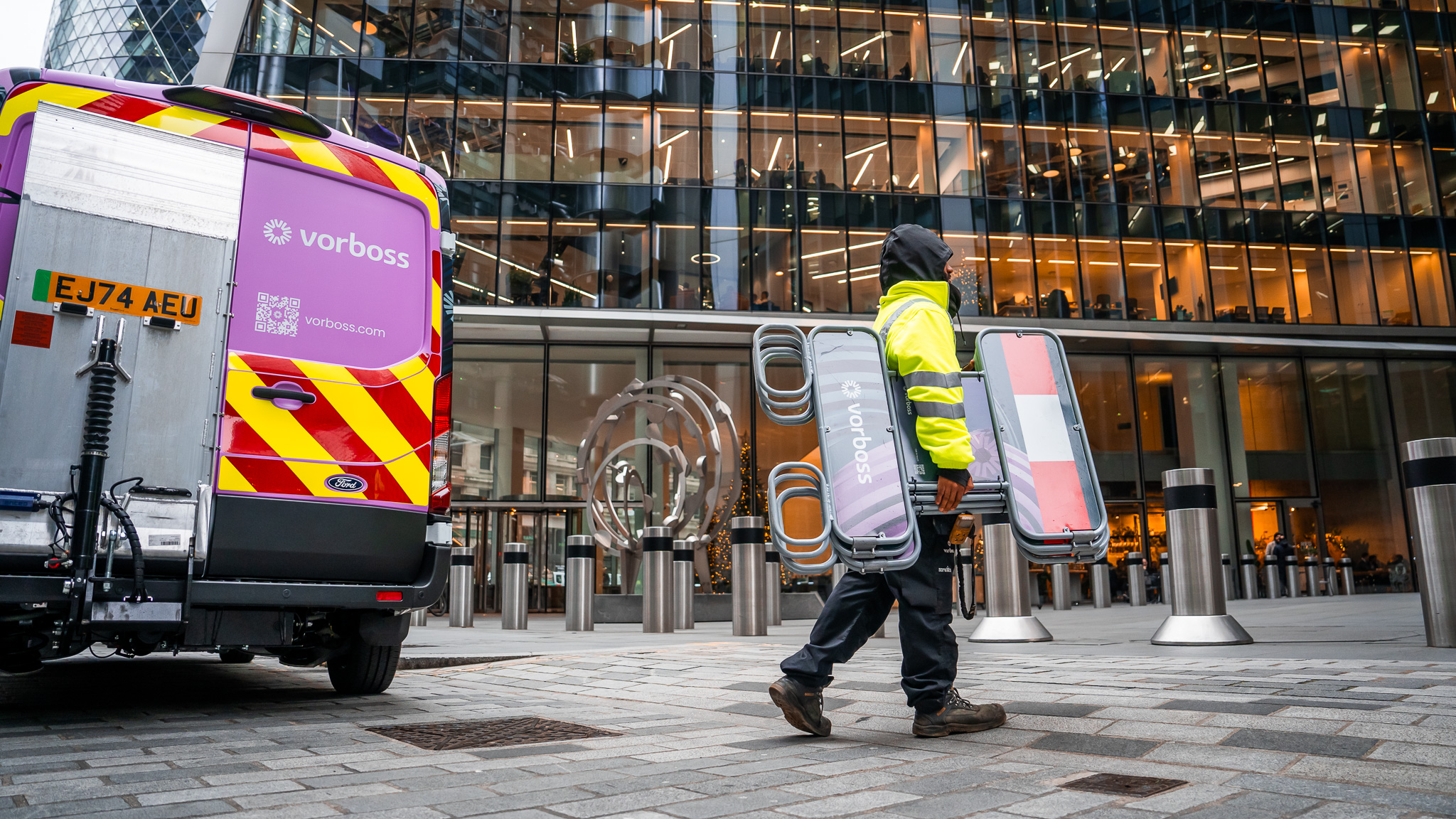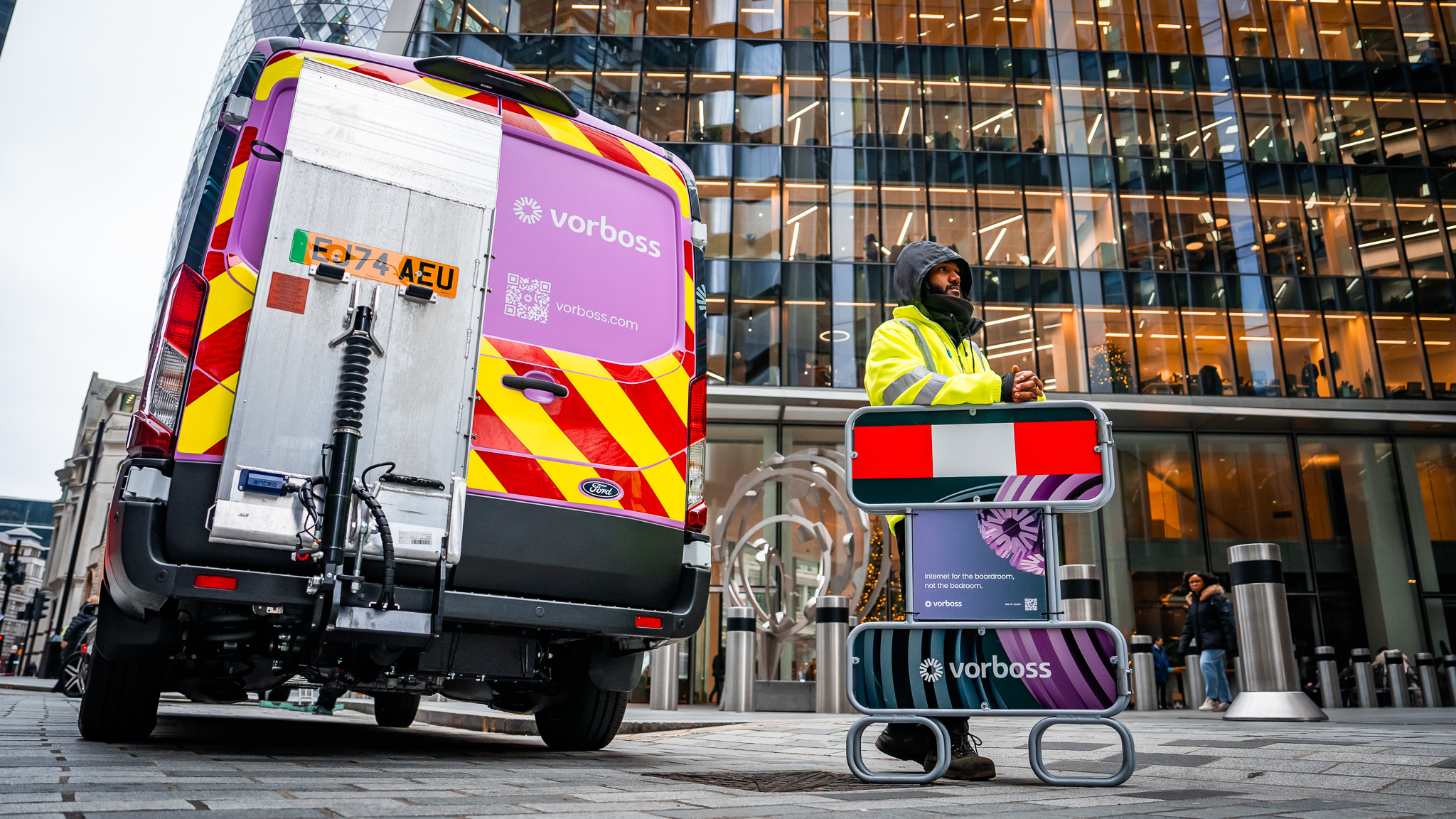Women in tech: interview with installation technicians Caprice and Acacia
March 24, 2023
|
4
min read

Highlights
Vorboss is committed to gender balance and diversity in the tech sector, setting an industry example with over a third of our Installation Technicians and Planning Engineers being women. Caprice and Acacia, Vorboss Installation Technicians, have benefitted from the company's inclusive environment and supportive measures.
This blog is part of a series of techUK interviews platforming inspiring women in tech. The series aims to call out gender bias, expose industry barriers, and spotlight the importance of a diverse tech future.
Women make up almost 40% of the build and installations team at Vorboss, so they are undoubtedly an influential part of the company. Their successes highlight the possibilities that arise when telecoms companies create inclusive, gender-balanced workplaces.
This is an interview of Caprice and Acacia, two of our inspiring Vorboss installation technicians. They serve as fantastic examples of flourishing women in tech.
Women in tech: interview with installation technicians Caprice and Acacia
Were you always interested in the telecoms industry, or were you drawn in by Vorboss and the diversity they offer?
Caprice: I’d say both to be honest. I like doing jobs where I’m busy and get to use my brain. This job was perfect, as I liked that there were good opportunities for women, and it’s something that I’m genuinely interested in. Before I started, I didn’t even know what chambers were (the covers you see on pavements where fibre cables are stored). Now I’m able to tell my grandparents about what they are and what they’re for, which is cool.
Acacia: I think having diverse teams is incredibly important, as you get more variety of views and people have different ideas and experiences. There’s always been another woman on my team with me at Vorboss, which is nice.
When did you join Vorboss? Can you give us an insight into your day-to-day job?
Caprice: I started in September. I work Tuesdays to Fridays in the field. Sometimes we could be blowing fibre through a subduct, other days we could be rodding and roping a route. Every day is different; it’s never the same, but it’s always exciting, and I’m always happy to go to work.
As this was your first job in telecoms, was training available to you?
Caprice: There was lots of training. There were also lots of people on standby to support me if I needed anything. I joined the Vorboss Academy—an accredited in-house training programme—which was eight weeks long. Some of it was online training, but I also went to the warehouse training centre every day and learned things like how to safely lift chamber lids and how to splice.
Why do you think that there are more men working in this sector than women?
Acacia: As it’s quite a physical job, traditionally people probably viewed it as more suited to men. Times have changed and women can now have a career in something that they feel suits them.
Do you feel Vorboss creates a supportive environment for women?
Caprice: Yes, definitely. For example, if there is a really heavy chamber lid, women can do it together. Women can work together on things like that. Also, they have made sure that the uniform fits for everyone. There is a uniform for women, but if women also want to wear the menswear to suit their personal preference, they can choose that also.
Acacia: We have support like period days. It’s a great help, especially as you can’t avoid having symptoms. We also have events such as women’s movie nights and women’s breakfasts where we all come together to talk about issues that we’re going through and how to make the workplace more inclusive for women. It definitely feels like a safe space to talk about things and helps to build a nice company culture.
Looking around at the people you work with, do you feel that it’s a diverse group?
Caprice: Yes, I would say so. In my team, there are actually more women than men. It’s nice to work with other women, and it feels more equal. I don’t feel belittled, and it shows that women can do a job which traditionally has been thought of as a man’s job. We get a lot of comments from pedestrians going past saying it’s nice to see women doing this job.
Acacia: It’s nice to see that a company in the industry is supporting women, and it’s inspirational for women working at Vorboss to see that they are trying to make a change. It shows that women of all ages can work as part of the installation teams, and it’s not just a role for men. Anyone can do it once they’re trained.
What sort of challenges have you faced in your role?
Acacia: There have been times where pedestrians walk past saying this isn’t a woman’s job. I don’t get that as much anymore. Vorboss is trying to encourage more women to work in the industry, and it’s becoming more normal. When things like that happen, we can go straight to our manager and are given support to make sure that we feel comfortable going to work every day. As Caprice said, there are also a lot more positive interactions with the public where we are recognised for having such a diverse team.
What’s your number one piece of advice for the future generations entering tech?
Acacia: Just go for it! If the opportunity comes up, take it with both hands and try to shine. You can learn so much!
Caprice: I’d say the same. Don’t let anything stop you or get in your way! You never know unless you try. Believe in yourself and don’t have self-doubt! Gender shouldn’t matter. There’s an opportunity for everyone.
Our people and culture team always puts equity, inclusion, and diversity first. If the Vorboss culture sounds right to you, head to our careers page to see our vacancies!
Tell us about yourself so we can serve you best.
Got a question?
More articles

For many landlords and building managers, the word “wayleave” feels like the responsible route whenever a fibre circuit is being installed on their property. It sounds formal and safe – a neat legal box to tick.
In many cases, however, a wayleave adds unnecessary complexity and delays, frustrates tenants, and can expose landlords to long-term legal risks.
At Vorboss, we’ve connected thousands of office spaces across London without a wayleave, keeping landlords in full control and getting tenants online faster.

What is a wayleave?
A wayleave is a written agreement between a landowner and a telecoms operator. It gives the operator permission to install and keep equipment on private property.
What many people don’t realise is that signing a wayleave also activates “Code rights” under the Electronic Communications Code. These rights go beyond simple permission, they give the operator legal powers to stay on the property indefinitely, access it when needed, and even refuse removal of their equipment in certain situations.
For a typical connection into a commercial building in London, a wayleave can make the fibre installation process slower, more expensive, and limit the landlord’s flexibility long term.
Why a wayleave isn’t required for standard in-building fibre connections
For a standard in-building fibre connection serving a tenant, a wayleave isn’t a legal requirement. Important protections, like building access, fire safety, repairing any damage, and removing equipment, are already covered by the tenant’s lease and usual building rules.
If no wayleave is signed, no Code rights are triggered, meaning the landlord retains full control and the installation exists under a simple, fully revocable licence.
In practice, this gives landlords far more protection and flexibility:
- No legal lock-in – the telecoms operator has no long-term rights to stay or refuse removal.
- Landlords keep full control – equipment can be moved or removed when the building changes.
- Faster fibre installation – no time lost in drafting contracts or solicitor reviews.
- Happier tenants – connections go live quicker; tenants get to move in faster.
By contrast, signing a wayleave and granting Code rights introduces a complex and expensive legal process for any fibre removal or relocation. This can take at least 18 months, plus potential court or tribunal proceedings, making it slower, and far less flexible for the landlord.

Public services across central London are evolving, and the City of London Corporation is leading the way.
Whether you work, live or study in the Square Mile, you’ll soon feel the difference that faster, more dependable connectivity brings.

What is the Future Network Programme?
The City of London Corporation is rolling out the Future Network Programme, a major project to modernise its entire digital infrastructure and bring everything under one unified network.
From offices and schools to iconic green spaces like Hampstead Heath, cultural destinations like the Barbican, and historic markets such as Leadenhall and Old Spitalfields, this upgrade will mean more reliable connectivity across the City’s buildings and public spaces.
It also extends to essential services, including critical sites run by the City of London Police. This enhanced connectivity will support everything from secure communication systems to faster, more resilient networks for emergency operations.
Leading this transformation is Roc Technologies, supported by Juniper Networks and Palo Alto Networks; all powered by the Vorboss fibre network. Together, we’re bringing the City onto a modern digital foundation that’s ready to support its future.
Who the Future Network Programme benefits and how?
The programme is designed for everyone who depends on public services in the Square Mile:
- Students in City-run schools will have fast, reliable connectivity to fully access digital learning tools.
- Public-sector teams will experience smoother hybrid working, better access to online platforms, and more efficient collaboration across locations.
- Residents and visitors will see improvements in public Wi-Fi, digital services, and online access in libraries, community hubs, and other shared spaces.
- The City of London Police will gain a more secure, faster and resilient network that enhances CCTV reliability and enables more effective frontline operations.

.avif)

.avif)

